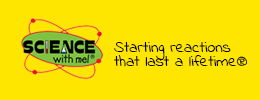My kids are fascinated by sound. Maybe it’s because they are very good at making lots of it! But what causes sound?
Sound occurs when an object vibrates. When an object moves back and forth we say it vibrates. When something vibrates (like your voice box) it causes the molecules around it to also vibrate, which then causes a ripple of motion (known as a sound wave) that can travel through air, water, and solid materials such as wood or a piece of string. We hear sounds because the vibrations created travel through the air to our ears. Notice that when people want to hear something better they often cup their hand around their ear. This is to help them catch the sound waves. The shape of our ears helps us catch sound waves.
 We all make use of sound on a daily basis, like when we listen to each other speak, or listen to the radio or television. Telephones also make use of sound. In a later post I am going to explain to you in more detail how the modern telephone works. But first it is important that our kids understand something about sound. Here’s a simple experiment you can do with the kids in your life to teach them something about sound and how it travels. I have also made this easy science experiment available as a**Let’s Talk on the Telephone** handout that you can print out and follow along with the kids in your life.
We all make use of sound on a daily basis, like when we listen to each other speak, or listen to the radio or television. Telephones also make use of sound. In a later post I am going to explain to you in more detail how the modern telephone works. But first it is important that our kids understand something about sound. Here’s a simple experiment you can do with the kids in your life to teach them something about sound and how it travels. I have also made this easy science experiment available as a**Let’s Talk on the Telephone** handout that you can print out and follow along with the kids in your life.
Let’s get started:
You will need:
- 2 empty plastic cups
- Scissors
- String
- Science With Me! lab partner
- Lab notebook & pencil
- 2 paper clips


Instructions:
- Using a pencil poke a hole in the center of the bottom of each of the plastic cups.
- Using the scissors cut a piece of string that is about 15 feet long.
- Thread the end of the string through the hole in the cup.
- Have your child pull the string a few inches through the cup then help them tie the end of the string in a knot so that the string can’t pull back through the cup. You can also attach a paper clip to the knot to stop the string from slipping back through the cup.
- Repeat steps 3 and 4 with the other end of the string and the other cup.
- Have your child walk away until the string is tight. Get them to hold the cup up to their ear while you whisper loudly into your cup.
Can your child hear what you are saying? Now it’s your child’s turn to talk. Can you hear what they are saying?
Questions to ask your child:
- What happens if we pinch the string between the two cups? Can we hear each others voice as well?
- What happens if the string between the cups isn’t pulled tight? Will the telephone work as well?
Have your child write or draw their observations in their Science With Me! Lab notebook. Recording you observations is a very important part of being a scientist.
Hypothesis:
All sounds are vibrations. Your voice is no different! When your child talks into their cup, this causes the air inside their cup to start vibrating. The vibrations then travel through the cup, into the string and into the other cup. The 2nd cup channels the vibrating air molecules into your ear so you can hear what they are saying loud and clear.
Conclusions:
For the cup telephone to work, the string between the two cups must be able to vibrate freely. That’s why if the string is pinched the vibrations are disrupted and your child can’t hear your voice as well. This also explains why the string between the cups must be pulled tight for the telephone to work. If the string is loose, the sound vibrations will die out before they reach the other cup. This is similar to the way sound travels in real telephones with wires. Want to learn more about sound? Be sure to check out the free previews from our Sound Activity Set. Your thoughts?
Interesting Sound Facts:
Sound waves travel more slowly than light waves. That explains why during a thunderstorm you see the lightning first and then hear the thunder several seconds later, even though they happened at the same time.
- How fast sound travels (i.e. the speed of sound) depends on what medium it is traveling through. The speed of sound is 340 meters per second in air while as the speed of sound is 1450 meters per second in water.
